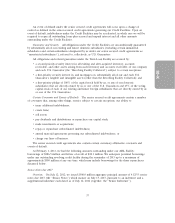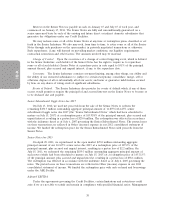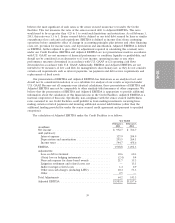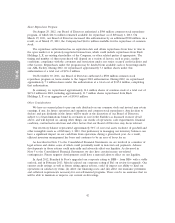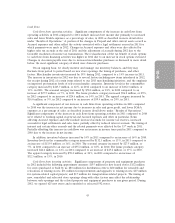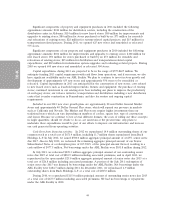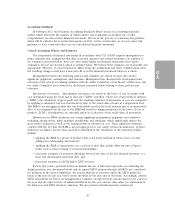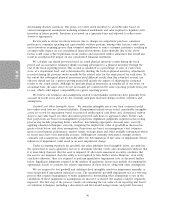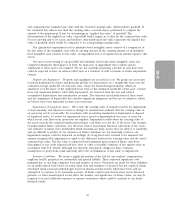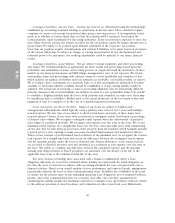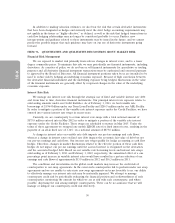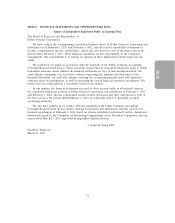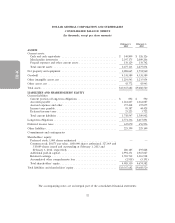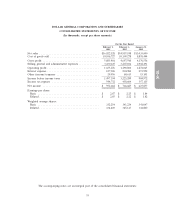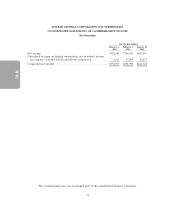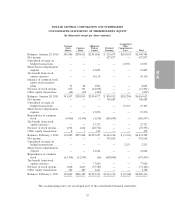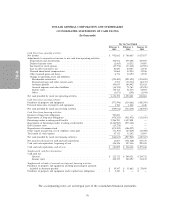Dollar General 2012 Annual Report Download - page 125
Download and view the complete annual report
Please find page 125 of the 2012 Dollar General annual report below. You can navigate through the pages in the report by either clicking on the pages listed below, or by using the keyword search tool below to find specific information within the annual report.
10-K
determining obsolete inventory. Our policy is to write down inventory to an LCM value based on
various management assumptions including estimated markdowns and sales required to liquidate such
inventory in future periods. Inventory is reviewed on a quarterly basis and adjusted to reflect write-
downs as appropriate.
Factors such as slower inventory turnover due to changes in competitors’ practices, consumer
preferences, consumer spending and unseasonable weather patterns, among other factors, could cause
excess inventory requiring greater than estimated markdowns to entice consumer purchases, resulting in
an unfavorable impact on our consolidated financial statements. Sales shortfalls due to the above
factors could cause reduced purchases from vendors and associated vendor allowances that would also
result in an unfavorable impact on our consolidated financial statements.
We calculate our shrink provision based on actual physical inventory results during the fiscal
period and an accrual for estimated shrink occurring subsequent to a physical inventory through the
end of the fiscal reporting period. This accrual is calculated as a percentage of sales at each retail
store, at a department level, and is determined by dividing the book-to-physical inventory adjustments
recorded during the previous twelve months by the related sales for the same period for each store. To
the extent that subsequent physical inventories yield different results than this estimated accrual, our
effective shrink rate for a given reporting period will include the impact of adjusting the estimated
results to the actual results. Although we perform physical inventories in virtually all of our stores on
an annual basis, the same stores do not necessarily get counted in the same reporting periods from year
to year, which could impact comparability in a given reporting period.
We believe our estimates and assumptions related to merchandise inventories have generally been
accurate in recent years and we do not currently anticipate material changes in these estimates and
assumptions.
Goodwill and Other Intangible Assets. We amortize intangible assets over their estimated useful
lives unless such lives are deemed indefinite. If impairment indicators are noted, amortizable intangible
assets are tested for impairment based on projected undiscounted cash flows, and, if impaired, written
down to fair value based on either discounted projected cash flows or appraised values. Future cash
flow projections are based on management’s projections. Significant judgments required in this testing
process may include projecting future cash flows, determining appropriate discount rates, correctly
applying valuation techniques, correctly computing the implied fair value of goodwill as discussed in
greater detail below, and other assumptions. Projections are based on management’s best estimates
given recent financial performance, market trends, strategic plans and other available information which
in recent years have been materially accurate. Although not currently anticipated, changes in these
estimates and assumptions could materially affect the determination of fair value or impairment. Future
indicators of impairment could result in an asset impairment charge.
Under accounting standards for goodwill and other indefinite-lived intangible assets, an entity has
the option first to assess qualitative factors to determine whether events and circumstances indicate that
it is more likely than not that the asset is impaired. If after such assessment an entity concludes that
the asset is not impaired, then the entity is not required to take further action. However, if an entity
concludes otherwise, then it is required to perform quantitative impairment tests as discussed further
below. Significant judgments required in the analysis of qualitative factors may include determining the
appropriate factors to consider, the relative importance of those factors, along with other assumptions.
We are required to test goodwill and indefinite-lived intangible assets for impairment annually, or
more frequently if impairment indicators occur. The quantitative goodwill impairment test is a two-step
process that requires management to make judgments in determining what assumptions to use in the
calculation. If these judgments or assumptions are incorrect or flawed, the analysis could be negatively
impacted. The first step of the process consists of estimating the fair value of our reporting unit based
on valuation techniques (including a discounted cash flow model using revenue and profit forecasts)
46



